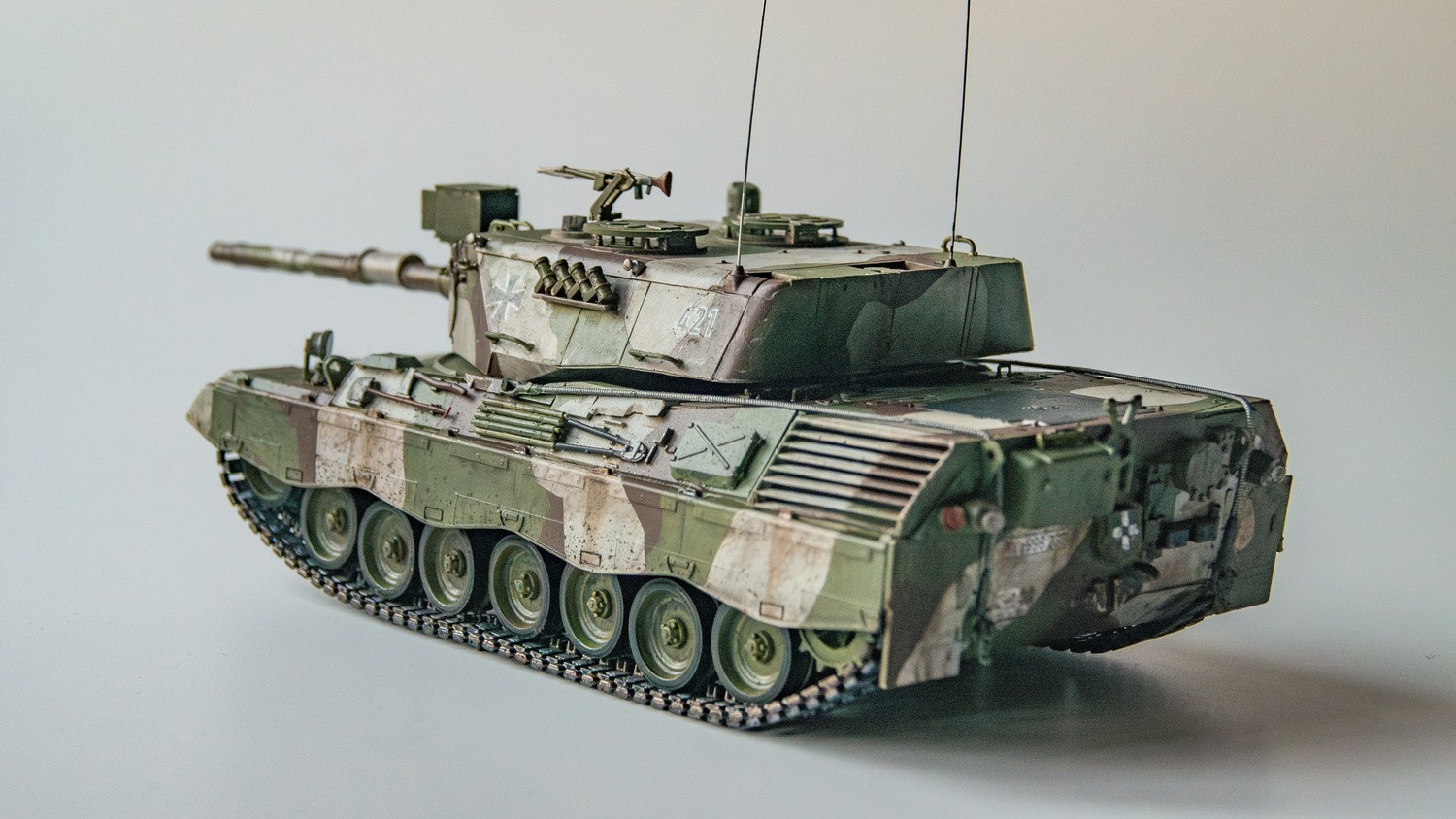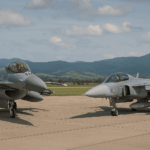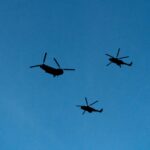Every tank feels different. Controls on a T-72 ask for muscle memory, while the Leopard’s clutch and gearbox demand a softer touch. “The Leo turns quicker and keeps speed on hills,” one Ukrainian trainee explains through a volunteer interpreter. “That helps when you must leave cover fast.” His words match the design. The Leopard 1 weighs about forty tonnes – light for a main battle tank – and its MTU diesel pushes it beyond 60 km/h on a firm road.
Preparation for this surge in training began in February, when Berlin cleared up to 178 Leopard 1s for export. The Netherlands and Denmark joined the project within days. Civilian firms – Rheinmetall in Unterlüß and FFG in Flensburg – pulled mothballed hulls from storage, stripped rust, and wired replacement radios. This effort followed a European coalition effort launched in early 2023 to supply Ukraine with refurbished Leopard 1 tanks. A handful of surplus Danish driving trainers arrived next, complete with their tall cabins and dual controls.
European support helps revive and supply Leopard 1 fleets
Replacing the dummy guns turned out harder. The training center had long retired its Leopard 1 driver fleet, so spare barrels had gone to scrap. Engineers welded fresh steel pipes, painted them NATO-green, and mounted them in time for the first Ukrainian intake. “It was a race, but we won it,” says Captain Daniel F., who oversees the course.
The trainees bring their own challenges. A third never held a civilian driving license, while conscription only required a tractor permit. Senior soldiers coach their younger mates each evening. After dark, groups crowd around plastic scale models marked with Ukrainian labels beside German ones. Fingers tap throttle positions. Notes fill dog-eared pads.
Bundeswehr officers insist on practicality over pageantry. Classroom slides show rapid track-change methods and field fixes for fuel leaks. Simulators trim wasted fuel yet never replace time in steel. Two nights ago, the instructors kept bays open past midnight so that a father in the class could steal an hour with family – his wife and children fled to Germany earlier in the war and found out he was training nearby. The brief reunion left him tired but energized. “Now I can picture what I defend,” he says, wiping engine grime from his hands.
Leopard 1 role in Ukraine’s fast-moving armored tactics
Each man knows where he heads next. The first wave of refurbished Leopard 1A5s, shipped from Denmark and Germany, will reach Ukraine before winter. They will join counter-offensive brigades that still run mixed fleets: upgraded T-64s for heavy blows and Western light armor for maneuver. Speed and low silhouette give the Leopard a niche – as a quick-react reserve and as a mobile gun platform that darts out, fires, and slips back before Russian drones pinpoint it.
The instruction package expands week by week. By autumn, German teams expect to teach not just drivers but also gunners and commanders, and to add courses on recovery variants, bridgelayers, and the Wisent mine-clearing vehicle – all based on the same chassis. Future classes will spend part of their schedule on digital simulators donated by industry, cutting fuel use while drilling turret crew procedures.
Leopard 1 Ukraine Deployment – March 2025 Update
Seventeen months later, the same Ukrainian captain stands next to a different Leopard tank on a muddy field outside Zaporizhzhia. This one looks tougher—steel mesh now wraps around its turret like a cage, and the paint job has changed to a digital pattern better suited for drone-heavy skies. The training no longer happens in Germany. It’s here now, on Ukrainian soil. German advisors have stepped back. Ukrainian sergeants lead the sessions.
The 44th Separate Mechanised Brigade has grown into a fully Leopard-equipped unit. What was once a patchwork of vehicles is now built around the 1A5. Germany, Denmark, and the Netherlands have delivered 103 of them so far. That includes fifteen Danish DK-standard tanks shipped in December 2024. Another twenty-five are still being refitted at a plant in Flensburg. Alongside the tanks, support gear has arrived: recovery vehicles, driver-trainers, tools, and spare parts. Rheinmetall sends its own teams to the front to keep the tanks rolling, and Polish trains bring gearboxes east on a tight rotation. Similar efforts to upgrade older tank models are underway in other regions as well.
Leopard 1 units expand across Ukraine with growing European support
Losses have happened. Open-source trackers report thirteen Leopards destroyed and four more damaged since their first deployment last summer. Crews say drones—not missiles—are the real threat. Russian FPV drones hit tanks from above, where the armor is weakest. But the Leopard’s speed still matters. If the crew shoots and backs out within a minute, the tank often dodges detection. This has changed how attacks are planned. Long battles in fixed positions are out. Now it’s about fast hits, then disappearing.
One new tank stands out. Belgium sent a Leopard 1A5BE with a lightweight Cockerill 3105 turret. This Belgian Leopard 1A5BE variant featuring a modernized turret adds new fire angles and speed to the fleet. It’s lighter, has an autoloader, and fires at steep angles—useful for hitting drone operators hiding in buildings or lofting shells behind cover. It arrived in May and went straight to testing near Kryvyi Rih. If it holds up in combat, up to thirty more may get converted the same way. The goal is a tank that moves fast and shoots from odd angles—one step ahead of drone swarms.
The training keeps changing. Crews now drill against drones as much as tanks. They practice:
- Dodging into cover when drone alerts come in
- Firing smoke screens at first sight of drones
- Using roof jammers powered by small generators
- Aiming high at drones or balloons spotting from above
Footage from February shows Ukrainian gunners raising their barrels to the limit and firing programmable rounds at swarms of incoming FPVs. Then they race off to avoid counterstrikes.
The politics around the training also shifted. Last August, the EU warned against setting up permanent NATO training hubs inside Ukraine. But that didn’t stop nearby teams from operating. Mobile trainers now work out of Slovakia and Romania. Ukrainian crews cross the border for short rotations. Most of the teaching now comes from Ukrainians themselves. NATO staff help with the electronics and parts, but the instruction happens in Ukrainian, on Ukrainian terms. Some missions also aim to secure logistics routes into Ukraine from the west.
Morale looks solid. One driver, Oleksandr, compares things to where he started: “In Germany, the Leo felt like someone else’s tank. Now it’s ours. We welded the cages ourselves. We know how to fix the engines. The manuals are in our language.” His crew isn’t sure if the Belgian turret will become standard, but they don’t dwell on it. They trust the Leopard underneath.
It may be an old design, but the 1A5 keeps adapting. In a war ruled by drones and speed, that still matters.
REFERENCE SOURCES
- https://www.bundeswehr.de/de/organisation/weitere-bmvg-dienststellen/
- https://www.defensenews.com/global/europe/2023/02/07/european-coalition-to-give-refurbished-leopard-1-tanks-to-ukraine/
- https://armyrecognition.com/news/army-news/army-news-2024/germany-strengthens-ukraines-tank-force-with-the-delivery-of-15-additional-leopard-1a5-tanks
- https://euromaidanpress.com/2025/05/19/ukraine-is-getting-a-special-tank-from-belgium/
- https://www.aljazeera.com/news/2025/3/11/russia-ukraine-war-list-of-key-events-day-1111
- https://en.wikipedia.org/wiki/Leopard_1
- https://www.reuters.com/world/europe/offensive-tactics-leadership-rise-top-kyivs-training-wish-list-2023-08-17/
- https://www.c4isrnet.com/opinion/2024/01/08/how-does-the-leopard-1a5-stack-up-against-russian-armor/
- https://www.forbes.com/sites/davidaxe/2024/12/26/it-took-nearly-two-years-but-large-numbers-of-german-made-leopard-1-tanks-are-finally-arriving-in-ukraine/



